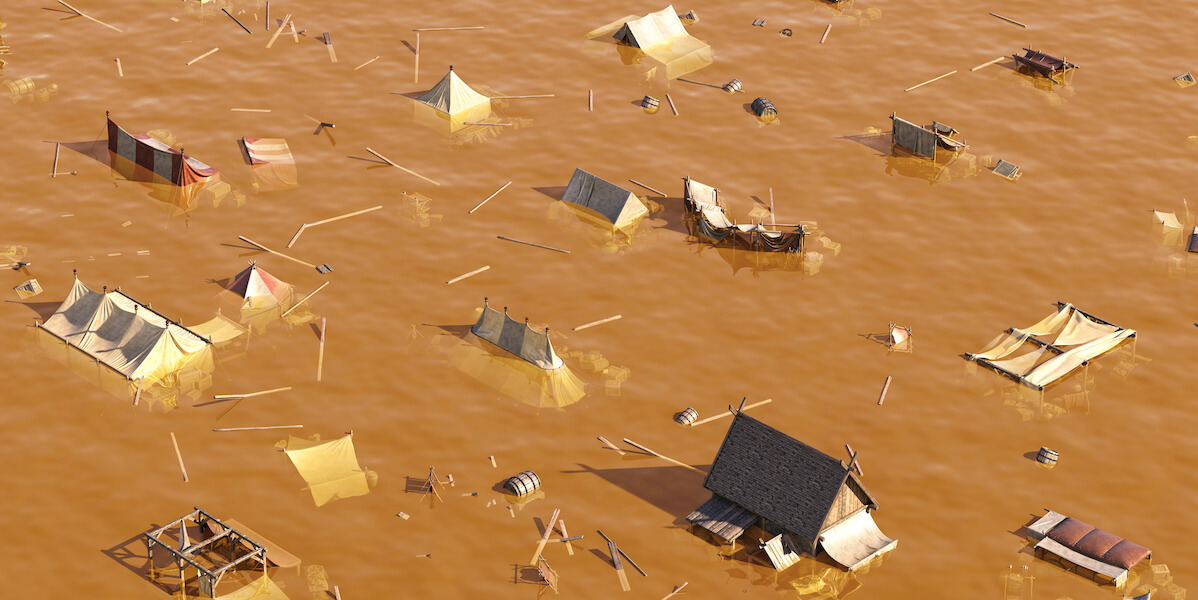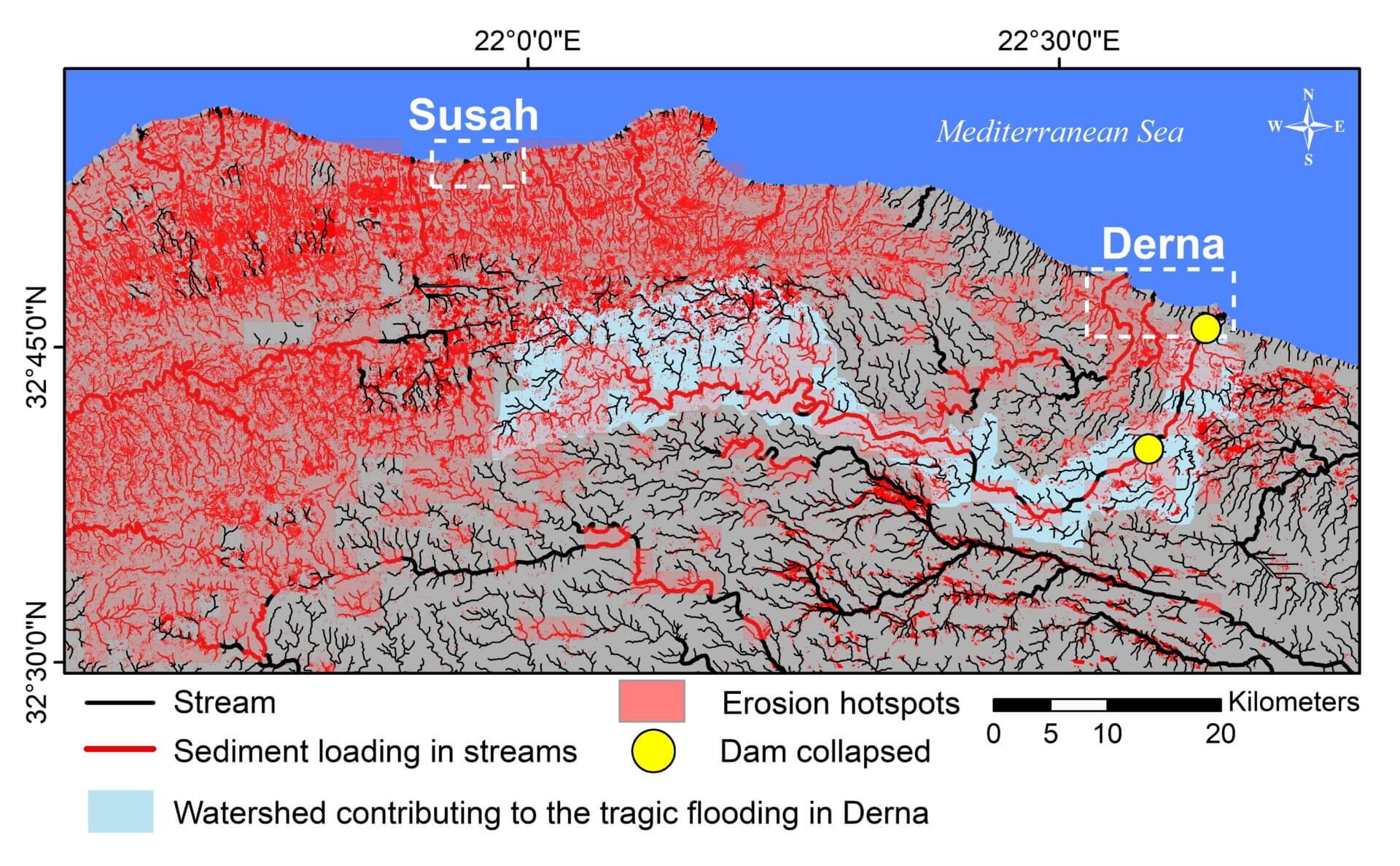
A new study from the USC Viterbi School of Engineering researchers, along with researchers from the Institute de Physique du Globe de Paris at the University of Paris Cité, has found that the increase in soil erosion in coastal areas due to desertification is worsening flood impacts on Middle Eastern and North African port cities. The researchers focused their observations on the devastating 2023 floods in the city of Derna, Libya, which took the lives of more than 11,300 people and showed how the increase in soil erosion significantly contributed to the catastrophic toll of these unusual desert floods. The research, published in Nature Communications, was published almost a year after the deadly flood happened on the September 10, 2023. The co-authors believe that their work sheds light on the alarming vulnerability that arid areas face given the rising frequency of extreme weather events due to climate change and the urgent need for advanced earth observations programs to monitor and characterize these areas.
Background:
Over the past decade, the North African Sahara, an area larger than the continental United States, has faced a dangerous combination of conditions; increasingly arid conditions which are interrupted by intense, coastal rainstorms. The source of such changes are as follows: increasing desertification has led to intensified droughts, and rainstorms in the region have increased in frequency due to the rising seawater temperature in the Eastern Mediterranean because of global warming. The paper’s corresponding author, Essam Heggy, who is a research scientist in the Microwave Systems, Sensors, and Imaging Lab (MiXIL) within the Ming Hsieh Department of Electrical and Computer Engineering and a co-principal investigator at the USC Viterbi Center for Arid and Water Research Exploration (AWARE), says that together, these two extreme conditions are increasing soil erosion and generating deadly mud flows that are hard to control with the aging dams that exist in the area.
While some scholars believe that that droughts are the Sahara’s deadliest threat, Heggy warns this is not the case. His collaborating paper,”Assessing flash flood erosion following Storm Daniel in Libya,” he says, provides the evidence.
A year ago, in the Fall 2023, Storm Daniel also known as “Medicane Daniel” struck the eastern coast of Libya, causing unprecedented flash floods with a death toll of more than 11,300 people and large-scale infrastructure damages. (It has been suggested by the Yale Climate Connections that have flash floods of this nature have not been observed on the continent in over 100 years.)
The authors explain that Africa’s deadliest flood in a century, which occurred in the desert, happened due to a combination of factors: unusually high precipitation, collapses in two flood control dams, and the failure of the city’s “blue” or water infrastructure to regulate this extreme event. They suggest that sediment loading, resulting from surface erosion, increased the density of flowing water and exacerbated the catastrophic impact of the flash floods in the coastal cities of Derna and Susah, where 66% of Derna’s, and 48% of Susah’s urban surfaces experienced moderate-to-high damages.

Method:
Using a series of Sentinel-1A C-band orbital Synthetic Aperture Radar images, the researchers measured the changes in the returned signal coherence, which informed the changes in surface textural properties before and after the storm’s occurrence. (These differences serve as a proxy for mapping flood erosion and assessing infrastructure damages.)
The researchers demonstrate that the flow within the streams was heavily loaded and thickened with eroded soils which increased the flow’s destructive nature. This, in turn, contributed to the failure of two dams that were supposed to protect the city and residents of Derna.
Existing runoff flow models are valuable for estimating flood extents, says Heggy. However, he says they fall short of assessing surface erosion in deserts, which can have a devastating impact, as seen in Derna.
Radar satellites, Heggy says, overcome this limitation. “Improving the monitoring of arid watersheds using advanced radar satellites will be crucial for mitigating these devastating risks across several parts of the Sahara, Arabian Peninsula, and other deserts.”
Jonathan Normand, a visiting graduate student at the USC AWARE Center and the first author of the paper says, “Today, you can post on social media from the middle of a desert thanks to the hundreds of communication satellites now orbiting Earth. Yet, researchers are still left with a limited number of satellites to grasp the complexities of Earth’s dynamics and surface processes in deserts.”
“The sequence of events that happened in Libya is one that can happen in many populous areas across North Africa and the Arabian Peninsula,” warns Heggy and colleagues in a parallel study carried out with researchers from Morocco and Spain.
There are also added risk factors, notes Heggy: Storms are getting stronger, and cities are getting more populous and less organized in terms of policies to reduce development and increase disaster preparedness.
“The deadly floods of Derna’s shows that regional policymakers in the Middle East and North Africa are not yet sufficiently listening to science, although the last two climate change conferences were hosted in the region. The deadliest enemy ahead is our own belief that these extremes are punctual events that will not repeat. Climate models tell us that they will hit back even stronger.”
